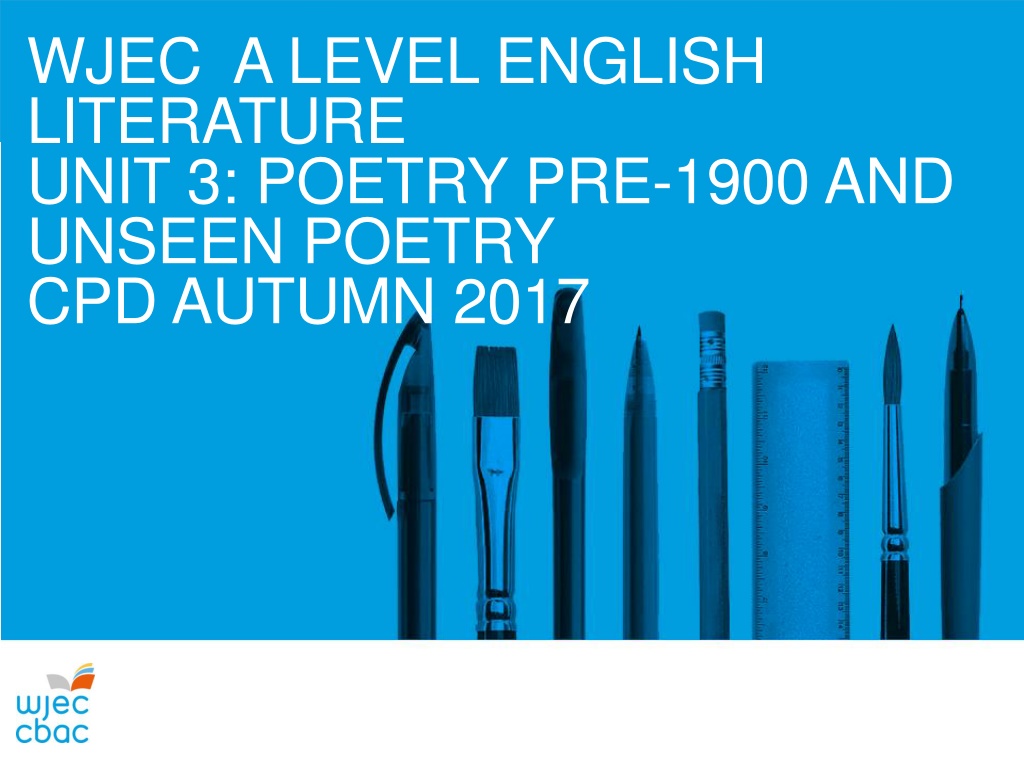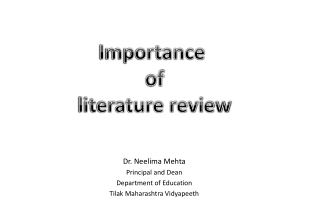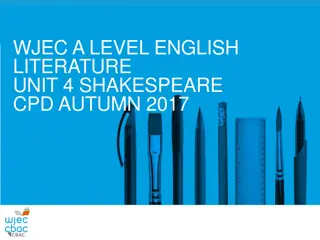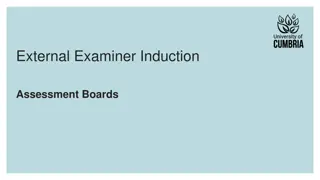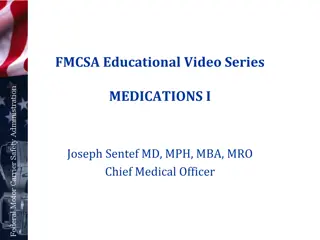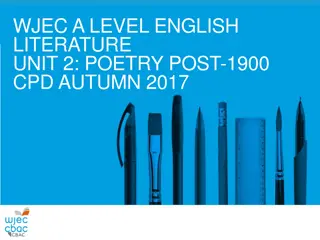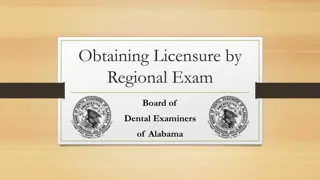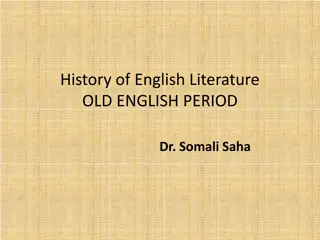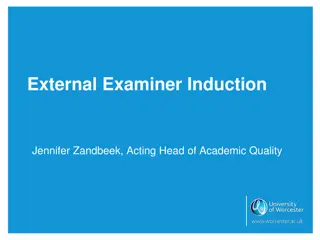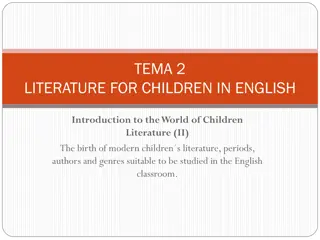Insights from WJEC A Level English Literature Examiners' Report
Examiners noted candidates' strengths and weaknesses in analyzing poetry pre-1900 and unseen poetry. Candidates lacked confidence in discussing form and contextual influences, but some effectively integrated these aspects. Responses to individual poems were detailed, with contextual focus crucial in essay responses. Candidates were advised to avoid overly focusing on the extract in part (i) when addressing part (ii) questions.
Download Presentation

Please find below an Image/Link to download the presentation.
The content on the website is provided AS IS for your information and personal use only. It may not be sold, licensed, or shared on other websites without obtaining consent from the author. Download presentation by click this link. If you encounter any issues during the download, it is possible that the publisher has removed the file from their server.
E N D
Presentation Transcript
WJEC A LEVEL ENGLISH LITERATURE UNIT 3: POETRY PRE-1900 AND UNSEEN POETRY CPD AUTUMN 2017
Examiners Report Key Points AO2: Some candidates showed a lack of confidence when commenting on form, rhythm and rhyme even when they were clearly aware of their effects. The main weakness here was often the lack of adequate supporting evidence. AO3: Though most candidates attempted to integrate contextual influences, some still offered stand-alone biographical/historical information. Too much biography or historical background can weaken attention to the texts themselves, something which happened quite often when candidates began their responses with biographical opening paragraphs. The most effective responses referred to clearly defined contextual influences to illuminate their readings of the text in relation to the question, an advanced skill which many performed astonishingly well.
Examiners Report Key Points Part (i) extract The task of looking closely (AO2) at an individual poem or extract appears to have allowed the majority of candidates to truly engage with poetry in detail and there were many sensitive, exploratory responses to the presentation of, for example, Damyan s character in The Merchant s Tale, of Satan s effects as serpent on Eve in Paradise Lost and of Keats s reactions to the sea religious, almost mystical, some felt. Reference to poetic techniques in questions 2 and 5 seemed to leave some candidates unsure as to what they should focus on, even though the phrase is prominently referred to in the assessment grids for AO2 in the specification and AO2 is always the main focus of all part (i) questions. A minority of candidates strayed unnecessarily at times into discussion of contexts (AO3).
Examiners Report Key Points Part (ii) essay Responses to set extracts (i) were generally better than the essay (ii). Addressing AO3 is the essential difference. Approaches which tended to miss the central contextual focus of, for example, ideas about evil in the Milton essay question led to more narrative/descriptive responses. Candidates should always be aware that part (ii) questions deliberately put the focus on context so that context can inform and lead the discussion of the text.
Examiners Report Key Points Although questions in parts (i) and (ii) are connected (perhaps by theme, for example), it is likely to be more helpful to candidates if they do not make the poem or extract in part (i) a major part of their response to part (ii). The second, longer question in Section A is designed to offer candidates the opportunity to demonstrate their knowledge and understanding of the wider text. So using the set poem in part (i) can only be rewarded where it has a direct relevance to the question. Make sure to address both key elements of the question: e.g. in the Rossetti question, weaker responses tended to discuss either nature or grief and sometimes struggled to connect the two.
Section B : Unseen Poetry Good to see confidence of candidates responding to unseen poems. In contrast, trying to fit in prepared content to Section A essay hampered some responses. Selecting key words seemed to be the most beneficial approach to the poems and to the double-weighted AO4 : making connections. Candidates who preferred to work their way through the poem could stumble when they met passages which were less clear to them. Candidates who took a more selective approach and focused clearly on question focus the presentation of birds tended to be more successful.
Section B: Unseen Poetry Mis-readings were not penalised (after all, these are unseen texts). More speculative readings were considered sympathetically especially if they were supported with textual evidence. Insufficient textual evidence for readings and connections main weakness in many responses. Candidates were often least convincing when discussing form and structure. The most successful responses were shaped around connections based on writers attitudes, language and imagery, form, structure and tone. Discussing the poems separately for much of the answer and then making connections can limit attention to the central and most rewarded AO. What this section showed is that the task of making connections (comparisons) seemed to elicit some of the finest writing and engagement with literature and often brought out wonderfully sensitive and perceptive responses to poetry of a quality not always seen in Section A and which delighted examiners time and again.
Task A: Unseen Poetry Prepare a response to the examination question, comparing POEM A The Skylark and POEM D Parrot 20 mins ( handouts) Remember key areas for addressing AO4 : poets attitudes, form, structure, tone, themes, imagery Find connections through key words.
Task B: Poetry pre-1900 Section A (ii): Preparing to respond to the essay task ( 10 minutes) Example: Keats essay Consider some of the ways in which Keats responses to nature influence his presentation of death and decay. Preparing a response: four areas to think about: 1. Choosing relevant poems 2. Addressing responses to Nature 3. Addressing death and decay 4. Considering contextual significance and influences: literary/cultural, social, historical. Which do you think is the most important of these four areas?
Task B: Poetry pre-1900 After deciding on which areas of context (AO3) you wish to explore in relation to the question, e.g. Romanticism, medievalism, legend, classics, mythology, then choose your poems for discussion.
Candidate response to Keats essay The Romantic poets weren't just impressed by the beauty and sublimity of the natural world, they saw something deeper, visionary in it. Wordsworth coming across daffodils, felt this; they lifted him onto a different plane. Keats's nightingale had a similar effect. In his Ode, he doesn't just describe the beauty of the bird's song, but is affected by deeper feelings that can only be described as like the effect of drugs, 'as though of hemlock I had drunk' accentuated in the poem by repeated sensuous language, 'aches.....drowsy numbness' and the heavy sinking rhymes of 'drunk' and sunk'. Drugged, Keats is able to escape the world of death and decay, 'fade away into the forest dim'.
Keats response continued Not that the poem underplays the world of suffering which family death and illness and his time training to be a doctor had made him all too aware of. The drawn out lines 'Where palsy shakes a few, sad, last grey hairs,/ Where youth grows pale, and spectre-thin, and dies' use pauses to increase the drama and inevitability of death. The beauty of nature consoles, can offer to transcend, but in 'Ode to a Nightingale', it cannot banish forever the fear and reality of death. As Keats says, 'the fancy cannot cheat so well'.
Extract from OER script 2 Chaucer response part (i) Q: Re-read lines 654-672 of The Merchant s Prologue and Tale, from Now wol I speke of woful Damyan.. to and leyde it at his herte. How does Chaucer present Damyan in these lines? Task C: Look at the extracts from a response to this question AO1 and AO2 which bands? Why? How can the response be improved?
Response to Chaucer extract Between lines 654-672, Damyan s love for May becomes evidently clear. Initially, he s seen as a pitiful character, with the adjective I speak of woful Damyan portraying his feelings of sorrowness as he s fallen in love with May. The quote That languished for his love also instantly portrays the strong feelings that poor old Damyan holds. Further on Chaucer presents Damyan as rather desperate for his feelings to be known, however he also portrays him as a character full of disbelief. His description of May, especially the adjective Fresshe May intensifies the admiration Damyan has towards May.
Response to Chaucer extract In the latter stages of the section, Chaucer intensifies Damyan s love for May, and the inclusion of Venus, the God of love, creates a highlight in the passage of his love. This site Damyan in Venus fyr, So brenneth that he dyeth for desyr: shows that Damyan s heart is set on fire by Venus _ this makes him ill. The idea and imagery here enables Chaucer to present Damyan as the most lovesick character in the tale, and his extreme love for Man has been made evidently clear in this passage, especially for the reference to Venus .
Response to Rossetti essay: identify AO3 approaches 5 (ii) Consider some of the ways in which Rossetti uses nature to write about grief. Grief is presented in a variety of ways throughout Rossetti s poetry. It played a centric role in her life suffering bouts of illness, lost or rejected love and many family deaths throughout her life, she had many reasons for grief. Yet it was not always as debilitating an emotion as it would seem often its natural imagery presents consolation and even peace at times of grief.
Response to Rossetti essay another extract 5 (ii) Consider some of the ways in which Rossetti uses nature to write about grief. Rossetti seems not to want the affected, grieving circumstances of a superficial Victorian society, one obsessed with consumption, but rather utilises their love for symbolism to reverse this ceremony to something more simple and religious devotion to God. Rossetti thus uses nature to negate grief, or at least console the dearest of the poem that Rossetti, due to her religious devotion, (already prevalent in her life, having begun attending services at Church when she was 13) is now in the hands of God.
Cwestiynau? | Any Questions? Cysylltwch n Swyddogion Pwnc arbenigol a th m cefnogaeth weinyddol eich pwnc os oes gennych unrhyw gwestiynau. Contact our specialist Subject Officers and administrative support team for your subject with any queries. gceenglish@wjec.co.uk @wjec_cbac @cbac_wjec cbac.co.uk wjec.co.uk
